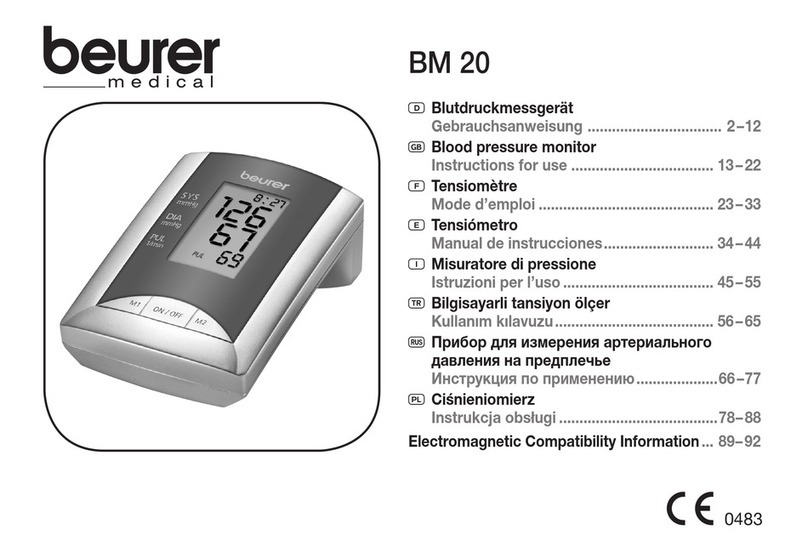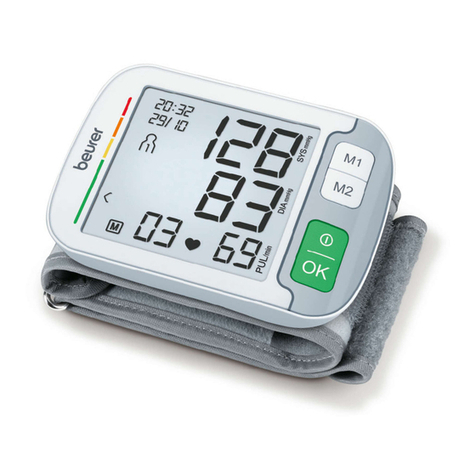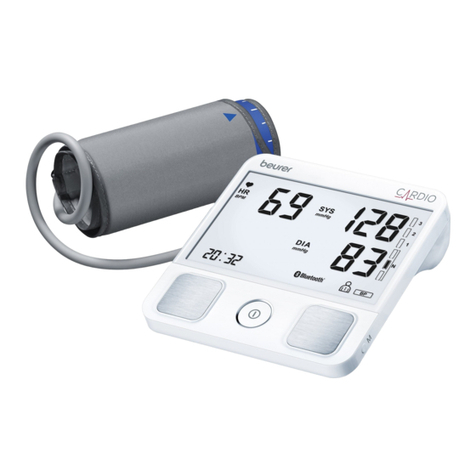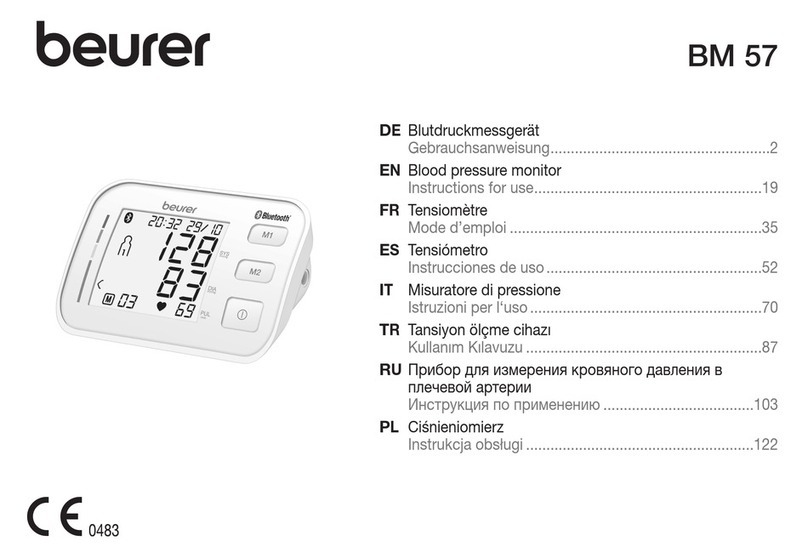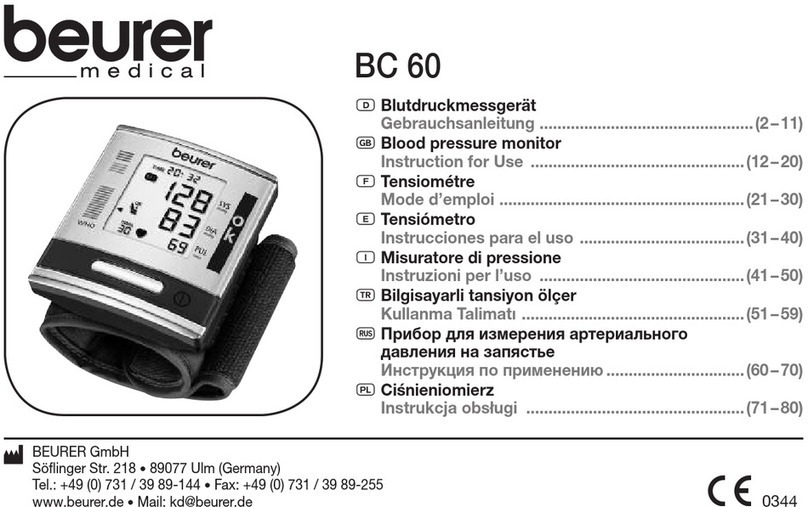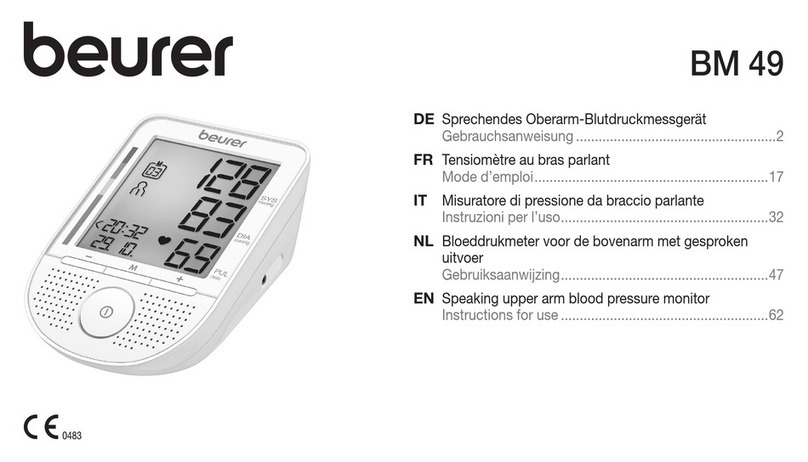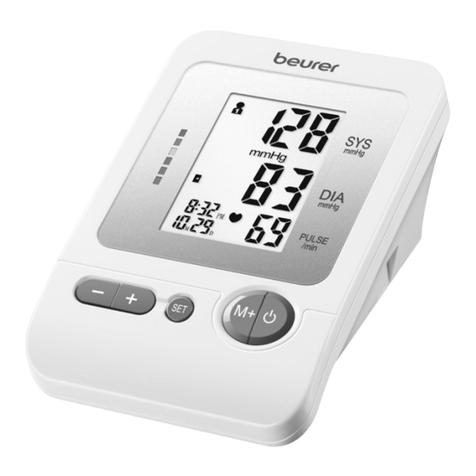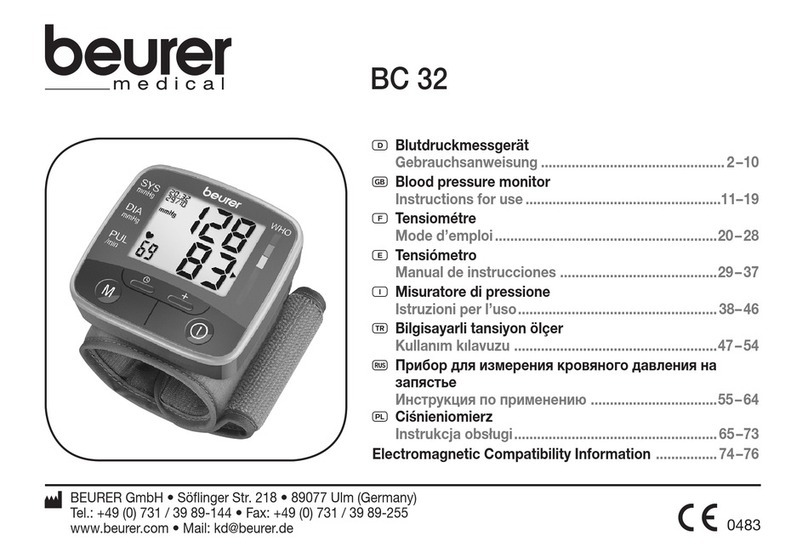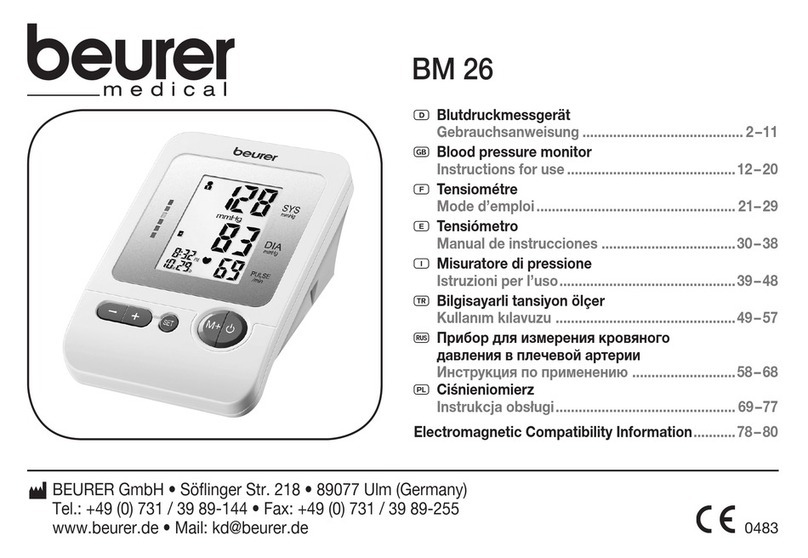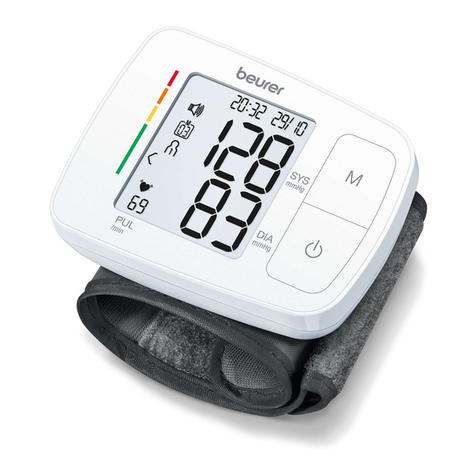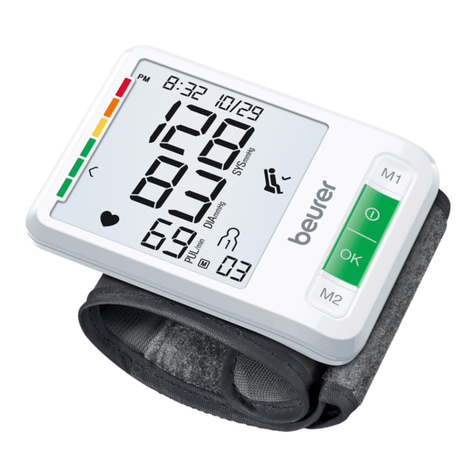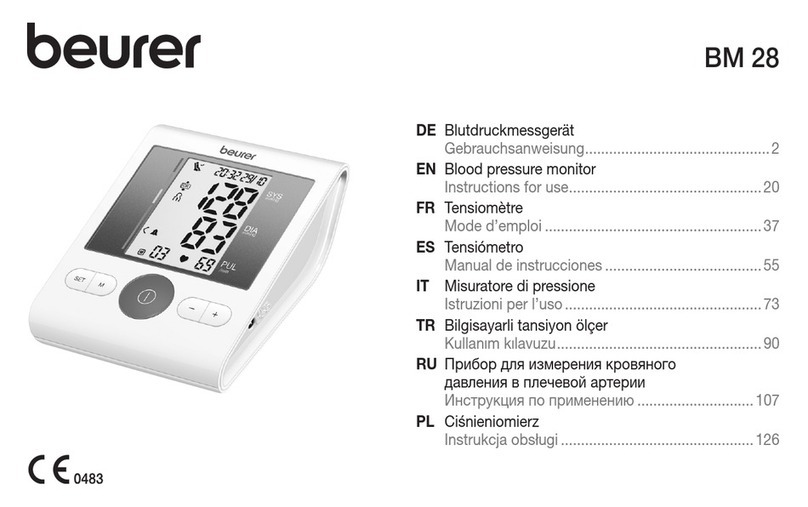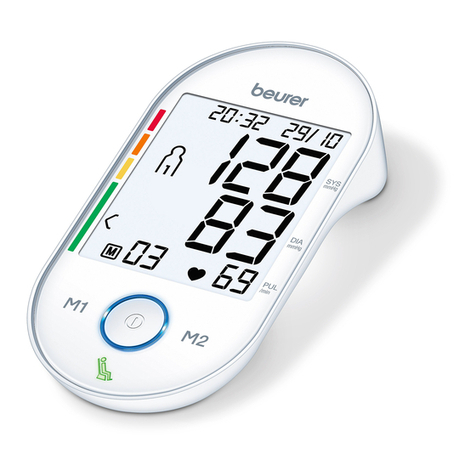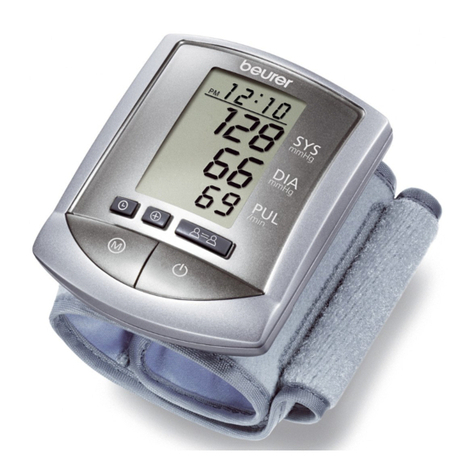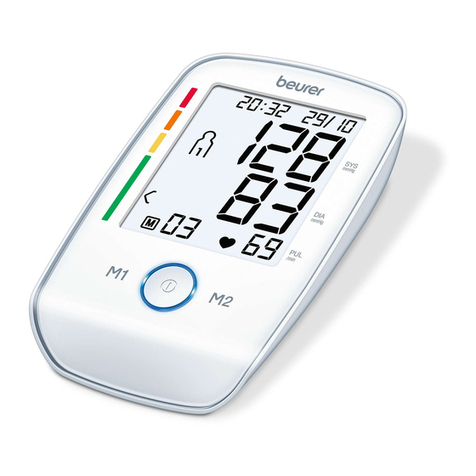
4
S
N
Serial number
The CE labelling certifies that the prod-
uct complies with the essential require-
ments of Directive 93/42/EEC on medical
products.
Advice on use
• In order to ensure comparable values, always measure
your blood pressure at the same time of day.
• Do not take a measurement within 30 minutes after eat-
ing, drinking, smoking or exercising.
• Before the initial blood pressure measurement, make sure
always to rest for about 5 minutes.
• Furthermore, if you want to take several measurements in
succession, make sure always to wait for at least 1 minute
between the individual measurements.
• Repeat the measurement if you are unsure of the meas-
ured value.
• The measurements taken by you are for your information
only – they are not a substitute for a medical examination!
Discuss the measurements with your doctor, and never
base any medical decisions on them (e.g. medicines and
their administration)!
• Using the blood pressure monitor outside your home
environment or whilst on the move (e.g. whilst travelling
in a car, ambulance or helicopter, or whilst undertaking
physical activity such as playing sport) can influence the
measurement accuracy and cause incorrect measure-
ments.
• Do not use the blood pressure monitor on newborns or
patients with preeclampsia. We recommend consulting
a doctor before using the blood pressure monitor during
pregnancy.
• Cardiovascular diseases may lead to incorrect measure-
ments or have a detrimental effect on measurement accu-
racy. The same also applies to very low blood pressure,
diabetes, circulatory disorders and arrhythmias as well as
chills or shaking.
• This device is not intended for use by people (including
children) with restricted physical, sensory or mental skills
or a lack of experience and/or a lack of knowledge, unless
they are supervised by a person who is responsible for
their safety or are instructed by such a person in how to
use the device. Supervise children around the device to
ensure they do not play with it.
• The blood pressure monitor must not be used in connec-
tion with a high-frequency surgical unit.
• Only use the device on people who have the specified
upper arm measurement for the device.
• Please note that when inflating, the functions of the limb
in question may be impaired.

